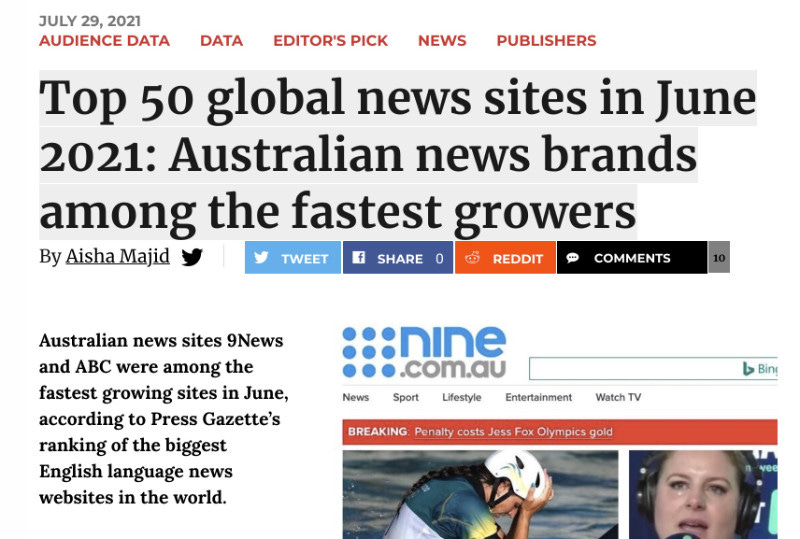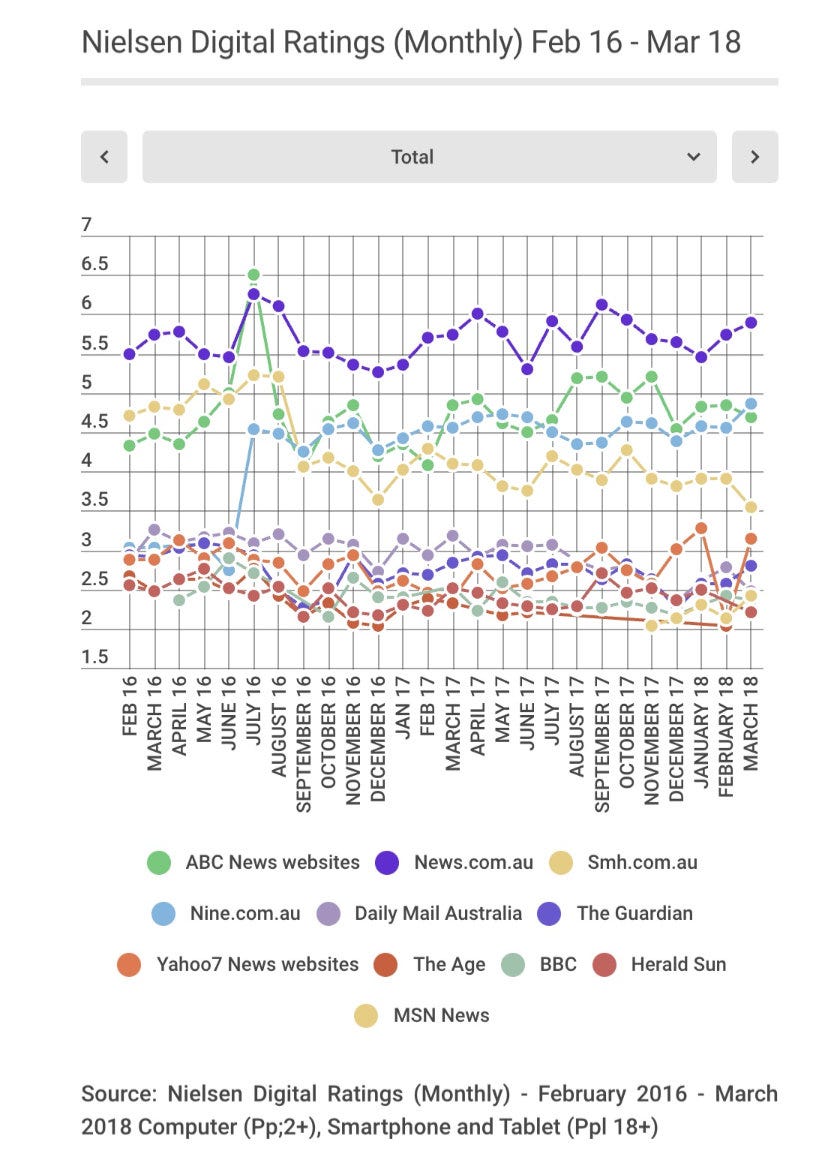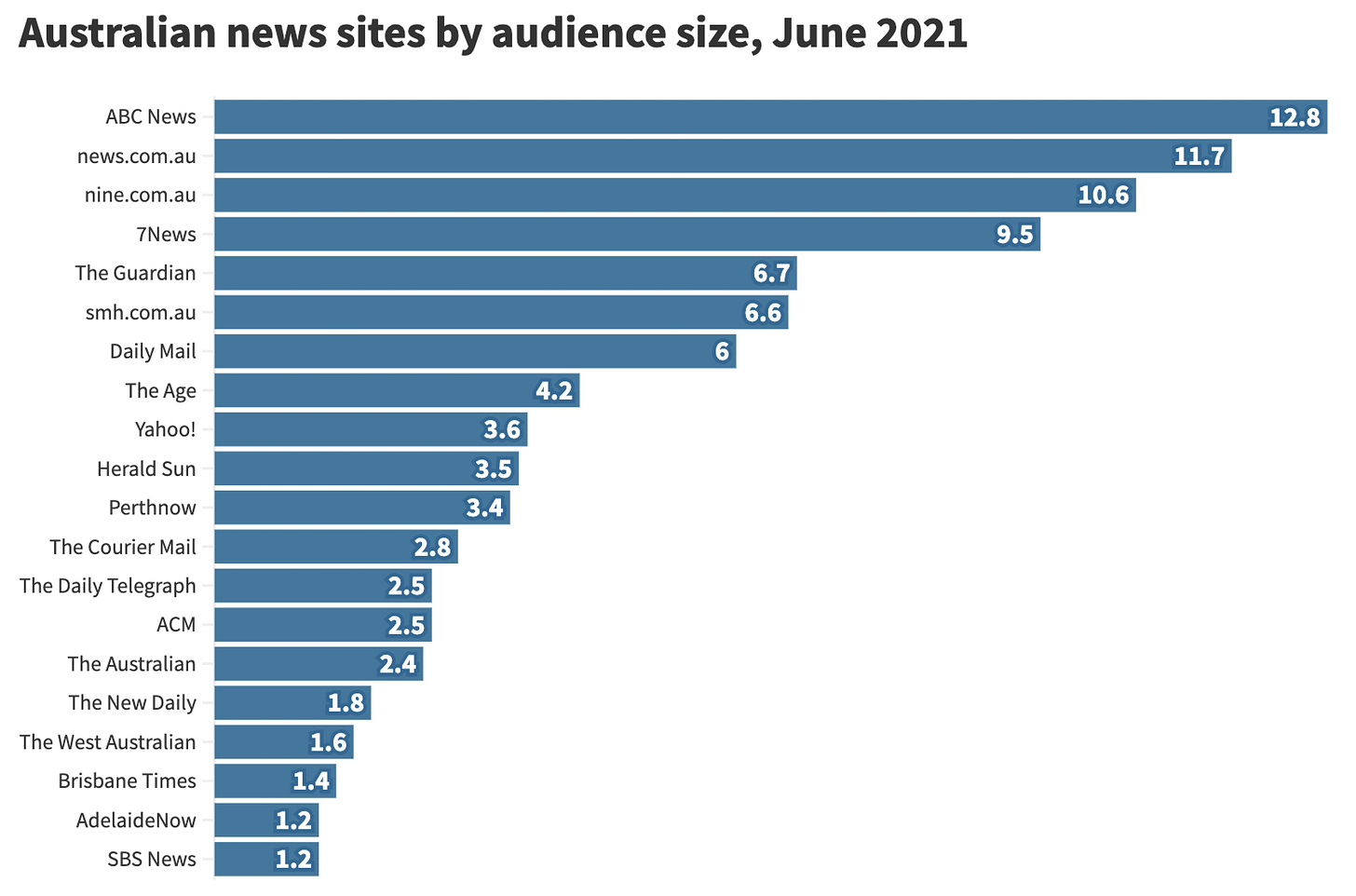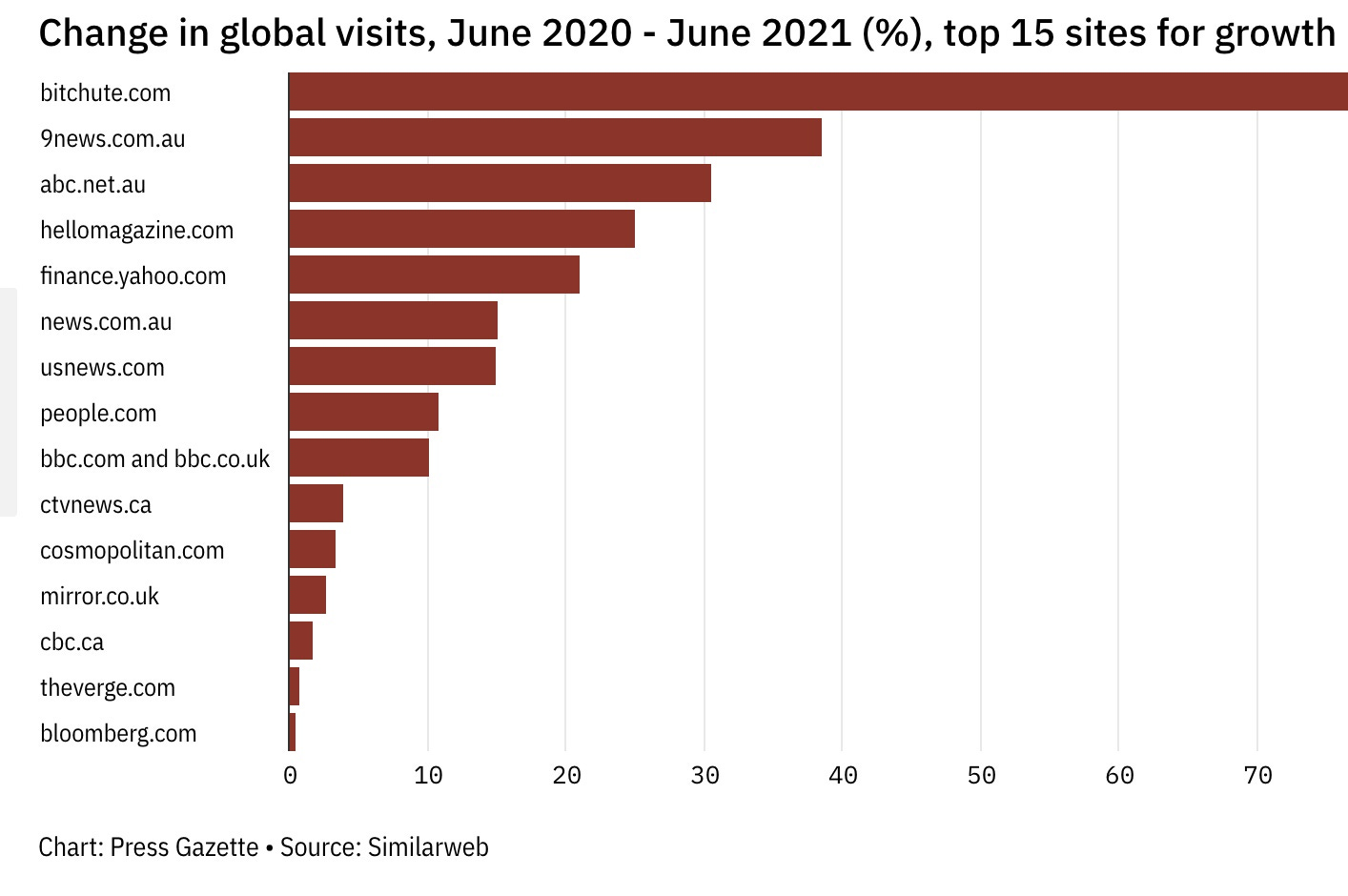UK media industry site Press Gazette has named 9news.com.au and ABC News as the fastest-growing sites in its monthly leaderboard of global English-language news.
I have been reading the Gazette since the beginning of the pandemic, and I have enjoyed its construction of a news traffic competition through the use of SimiliarWeb data. The recognition of the Australian sites’ high growth rates gave me a parochial thrill.

SimilarWeb is one of the crop of analytics companies that estimate traffic by extrapolating from its “contributory network” – user and device tracking – combined with actual numbers sucked out of Google Analytics (GA) and several other crafty ways of coming at traffic data.
Why anyone would share their GA numbers with an analytics company became clear to me when I attempted to create a SimilarWeb account: they wanted full metrics access to Crawford Media as a condition of logging on. This felt like giving the keys of the Kingswood to some random dude in a shopping mall.
While I refused that request, and consequently don’t have a SimilarWeb account, I sympathise with the desire to create one overarching “single source of truth” when it comes to web analytics.
Please sign up to Crawford Media if you don’t already subscribe. It’s free.
The quest
The search for the single source is legendary in today’s corporate environment. The more ardent the seeker, the faster the goal recedes. Like rainbows. The few occasions I have seen CEOs genuinely angry have involved inconsistent business data.
Within newsrooms the use of metrics is central but comes with some dangers. The online news feedback loop established in the 2000s has been well-documented – including in one of the chapters of “All Your Friends Like This” – and I don’t propose to go into that here. The essence of the problem is the abandonment of editorial agency in the pursuit of traffic, resulting in both a surfeit of disagreeable content and the loss of editorial character.
I know these dangers well: they arise from the use of internal metrics. These are the reliable numbers that come from code firing on your site and reporting page views, video streams, unique visits etc. They can be examined in the moment (through a real time tool like Chartbeat) or after a period (with something like Adobe Analytics or GA). It’s a difficult balancing act to encourage editors to care about these numbers without becoming their slave. Individual reporters and producers are probably better off being insulated from internal metrics on a daily basis.
Competitive leaderboards of the Press Gazette kind are a little different. My experience of this stems from Nielsen’s position as the arbiter of news site popularity in terms of monthly audience size in Australia and New Zealand. For years Nielsen produced a monthly leaderboard of the top 10 news sites (by audience size), and it was used by sites like Mumbrella to generate some drama.

While ad agencies didn’t seem to care too much about the news leaderboard, it was important to many editors and teams. Almost everyone recognised the numbers were flawed – not including mobile traffic at first, and often at odds with internal metrics – but most publishers grudgingly accepted that some kind of competitive view was better than none at all.
The consensus view of news audience size has been slipping away. In New Zealand, Stuff no longer runs Nielsen code on its pages, and in Australia the IAB refused to endorse a new Nielsen measurement standard earlier this year. That wrangle is still in motion. Until it is resolved Nielsen numbers are not being made public, although someone from the Guardian broke ranks last week and released a screenshot of the Top 20 on Twitter. I have re-entered the data to make the table below.

It’s interesting to compare the situation to TV, where ratings have fuelled ultra-competitive news bulletins over decades. In the minute-by-minute ratings that drop every morning – OzTAM in Australia, Nielsen in NZ – we see the precursor of digital metrics. In the case of TV, newsrooms have always had a view on their competition.
Competitive leaderboards can be useful in bringing teams together in a common purpose. They tell simple stories, and journalists like simple stories. A caveat is that audience size alone without a further measure of audience engagement is of limited use. If the goal is to find out who is “bigger”, a better measure might be total absolute audience engagement in minutes. This merges both the number of people consuming content and their level of engagement as they read articles or watch videos.
In the context of news in Australia and New Zealand, I don’t believe generic global products like SimilarWeb are going to cut it in terms of replacing Nielsen, if it comes to that. There are too many holes in the data – for example, my old newsroom Newshub does not appear in the numbers at all.
Regardless of who provides the numbers, it’s time for the digital content industry in this part of the world to get its act together, and fire up the leaderboard again. We need those simple stories.
Numbers behind the Press Gazette headline
The SimilarWeb numbers show ninenews.com.au increasing visits more than 18% between May and June 2021, no doubt fuelled by Sydney’s worsening Covid outbreak and lockdown. ABC news grew over 13% in the same period.
More interesting to me than the monthly numbers is a comparison of June traffic year-on-year: again, the very good performance of Australian sites (news.com.au joins 9news.com.au and the ABC) is probably a reflection of interest in the Sydney lockdown. The massive growth in BitChute is disturbing. I wouldn’t have included BitChute, a UK-based video platform for conspiracists, in a news classification at all. I will query the Gazette on this, but regardless, it is useful to know about this particular meteoric rise.

